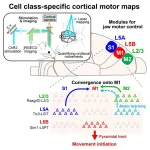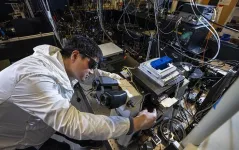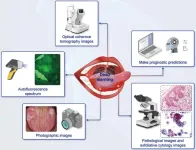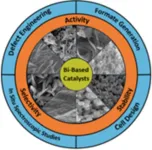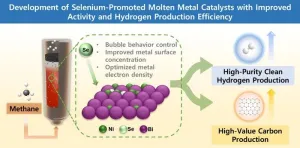(Press-News.org)
For nearly a century, scientists have known that different parts of the human brain’s cortex control different body movements. This fundamental discovery dates to the 1930s, when neurosurgeons used electrical stimulation to map how different cortical regions correspond to different body parts.
But can these regions be further broken down into even smaller functional components? Researchers have long suspected that cortical units for specific body movements are more complex than simple patches in the cortex. Studies have identified various types of neurons stacked in multiple layers across the neocortex, but without a clear picture of how these neurons interact to produce a specific movement at the level of brain networks.
A new study from EPFL, the University of Cambridge and Kumamoto University, has used advanced optical and genetic techniques to reveal that a movement unit in the neocortex contains distinct neural modules—each localized in different areas that have classically been assigned to planning, executing and sensing movements. More importantly, these modules change and adapt as skills are learned, providing a new framework for understanding how the brain refines motor control.
The study was led by Keita Tamura, Pol Bech, and Carl Petersen at EPFL’s Brain Mind Institute. Keita Tamura has contributed also from the University of Cambridge and Kumamoto University. It is published in Current Biology.
Horizontal network vs vertical columns
The researchers studied movement control in mice by combining optogenetics (a technique for controlling neural activity with light), high-speed cortical imaging, and machine learning-based movement tracking. This approach allowed them to selectively activate different types of neurons and observe how the resulting signals traveled through the brain to evoke movements.
To test whether the spatially-broad movement unit of the cortex could be broken down into smaller elements, the researchers first mapped where excitatory cortical neurons overall control mouth movements. Then, they selectively stimulated different neuron types.
The results were surprising: rather than being evenly distributed, different types of neurons control movement from different, distinct sub-regions within the broad movement unit. These sub-regions form a horizontal network of specialized modules, which challenges the traditional view that the cortex is organized into vertical columns—the idea that different types of neurons are stacked vertically from the brain’s surface to its deeper layers function as processing units.
Instead, the study suggested that a cortical movement unit has a more horizontally distributed and modular organization, where neuron-type-specific modules interact dynamically across different regions of the cortex.
The brain re-networks and adapts
For example, studying mouth movements of the mice, the researchers found that within the broad cortical unit that controls mouth movements there are smaller groups of neurons, each consisting of a specific type of neuron. And even though each type of neuron is spread out evenly, they form functional clusters in distinct cortical regions involved in planning, executing, or sensing movements. In fact, activity in these clusters consistently flowed towards one of those cortical regions for the execution of movements.
This challenges the idea that the brain processes movement in neat, vertical columns. Instead, the study suggests a more flexible and horizontally interconnected system, where different neuron groups work together for a specific function.
Furthermore, the researchers found that as mice learned new motor skills, some of these modules expanded into other cortical areas. This suggests that learning skills involves rewiring connections between these neural modules. In other words, the brain doesn’t just get ‘better’ at a movement—it reorganizes itself to optimize control.
The discovery has broad implications. Understanding how motor units are structured and how they change with learning could help researchers develop better treatments for conditions like stroke or brain injuries. If scientists can reveal how a network of the modules could compensate their function when one of the modules loses its function, they may be able to develop more efficient and precise rehabilitation therapies for example, potentially restoring lost motor function.
Reference
Keita Tamura, Pol Bech, Hidenobu Mizuno, Léa Veaute, Sylvain Crochet, Carl C.H. Petersen. Cell class-specific orofacial motor maps in mouse neocortex. Current Biology 26 February 2025. DOI: 1016/j.cub.2025.01.056
END
A research team co-led by Lawrence Berkeley National Laboratory (Berkeley Lab), Columbia University, and Universidad Autónoma de Madrid has developed a new optical computing material from photon avalanching nanoparticles.
The breakthrough – which the team published recently in the journal Nature Photonics – paves the way for fabricating optical memory and transistors on a nanometer size scale comparable to current microelectronics. This approach offers a path toward realizing smaller, faster components for next-generation ...
Colorectal cancer (CRC) is the second most commonly diagnosed cancer in China and a leading cause of cancer-related mortality. Despite improvements in treatment, the survival rate remains lower than in Western and other Asian countries due to late-stage diagnosis. Given that CRC typically develops over a prolonged period from precursor lesions, early detection and timely intervention are crucial for improving patient outcomes. However, CRC screening in China faces several challenges, including regional disparities, economic constraints, and limited public awareness. Recent advancements in non-invasive diagnostic tests, innovative imaging techniques, and ...
Aerospace engineering senior Philip Wilson attended an American Institute of Aeronautics and Astronautics (AIAA) conference. Rohit Raut, a senior physics major, presented his work at a nuclear research symposium, and senior biology major Jaden Rankin had the opportunity to feature her research at an entomology conference.
These and other University of Texas at Arlington students were able to showcase their original research at major symposiums thanks to UTA’s expansion of its popular undergraduate research program that provides funding for select students to present at academic conferences.
“At the conference, I presented my work on rotating ...
Oral cancer remains a serious global health concern due to its high morbidity and mortality rates, primarily caused by late-stage diagnosis. The presence of oral potentially malignant disorders (OPMDs) provides an opportunity for early intervention, as these lesions precede the development of oral squamous cell carcinoma. However, the accurate detection and classification of OPMDs remain challenging due to their diverse clinical presentations. Conventional diagnostic methods, including visual examination and histopathological ...
To develop a practical fusion power system, scientists need to fully understand how the plasma fuel interacts with its surroundings. The plasma is superheated, which means some of the atoms involved can strike the wall of the fusion vessel and become embedded. To keep the system working efficiently, it’s important to know how much fuel might be trapped.
“The less fuel is trapped in the wall, the less radioactive material builds up,” said Shota Abe, a staff research physicist at the U.S. Department of Energy’s (DOE) Princeton Plasma Physics Laboratory (PPPL).
Abe is the lead researcher on a new study published in Nuclear ...
The electrochemical reduction of CO2 has been recognized as a promising strategy to convert ambient atmospheric CO2 into valuable products. Bismuth-based catalysts have garnered the widespread attention of researchers due to their cost-effectiveness, low toxicity, and high natural abundance. Significant progress has been made toward enhancing the reactivity of catalyst structures through innovative synthesis techniques and engineering. Advances include the use of flow cells and membrane electrode assembly (MEA) cells to attain high cathodic current densities of over 200 mA cm-2 with superior ...
Researchers in South Korea have developed an advanced liquid metal catalyst incorporating selenium (Se) to enhance the efficiency of turquoise hydrogen production.
Turquoise hydrogen is generated via methane (CH₄) pyrolysis, producing hydrogen while yielding solid carbon as a byproduct, without emitting carbon dioxide (CO₂).
A research team led by Dr. Seung Ju Han at the Korea Research Institute of Chemical Technology (KRICT) has introduced selenium-doped molten metal catalysts (NiBi, CuBi) to significantly enhance methane pyrolysis efficiency. The technology demonstrates ...
A century of fire suppression, combined with global warming and drought, has led to increasingly destructive wildfires in the Western United States. Forest managers use tools like prescribed burns, thinning, mastication, and piling and burning to reduce fuel – live and dead trees, needles and leaves, and downed branches – that can feed intense wildfires. These methods aim to lower fuel levels, reduce crown density, and protect fire-resistant trees, fostering healthier, more resilient forests.
However, prescribed burning efforts haven’t kept up with the rapid buildup of surface fuel, creating a “fire deficit” – the gap between the amount of fuel that has ...
CLEVELAND—Researchers at Case Western Reserve University (CWRU) and University Hospitals (UH) will use state-of-the-art medical technologies they invented—and licensed to Lucid Diagnostics Inc.—to detect esophageal precancer, specifically Barrett’s Esophagus (BE).
BE is a change in the cellular structure of the esophageal lining typically caused by gastroesophageal reflux disease (GERD), also known as heartburn. The goal is to reduce the incidence of esophageal cancer (EAC).
EAC is a rare type of cancer with a high-morality rate—the cause of 2.6% of all cancer ...
Insilico Medicine ("Insilico"), a clinical stage generative artificial intelligence (AI)-driven biotechnology company, today announced the publication of a novel series of orally available covalent CDK12/13 dual inhibitors, as a potential option against refractory and treatment-resistant cancers. Published in the Journal of Medicinal Chemistry (IF=7.2), the study showcases the discovery of compound 12b, a potent, selective, and safe therapy targeting CDK12/13, empowered by Insilico’s proprietary generative AI platforms including PandaOmics and ...
